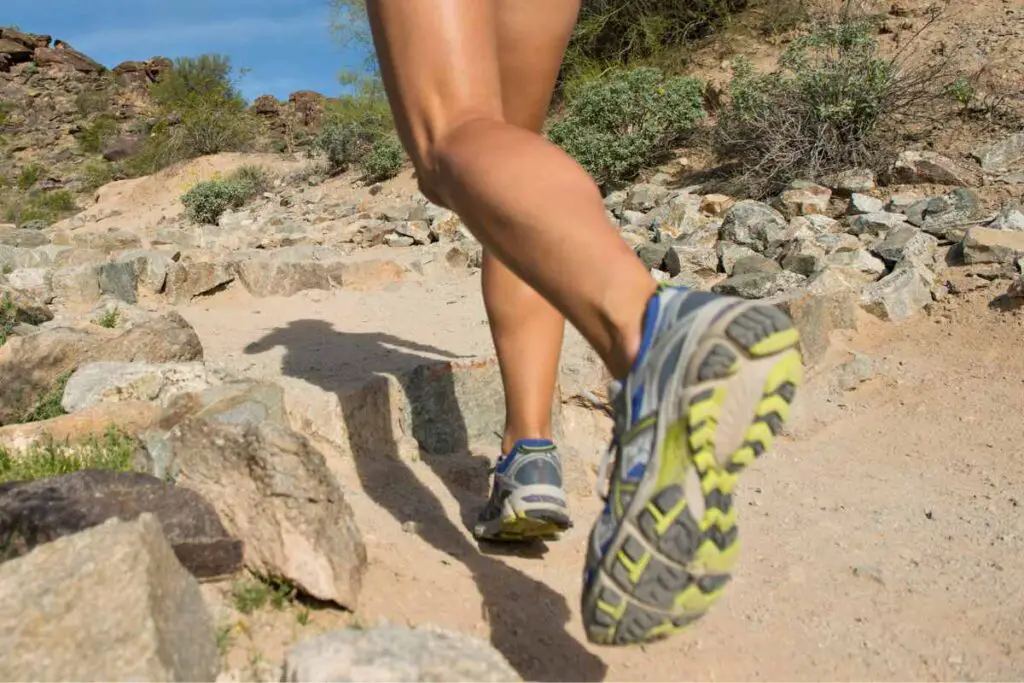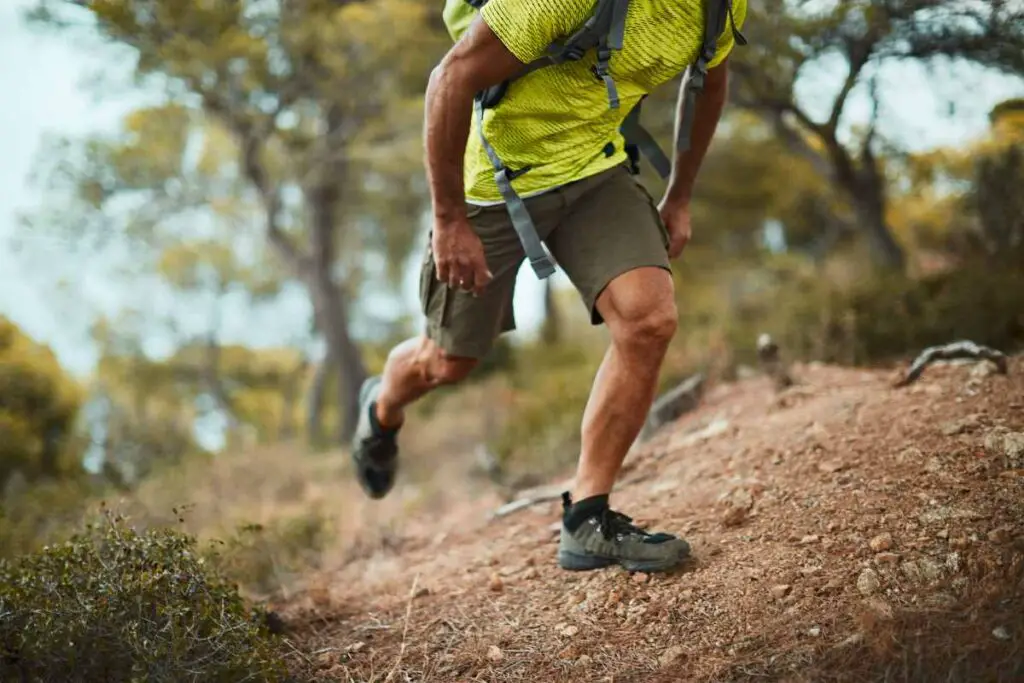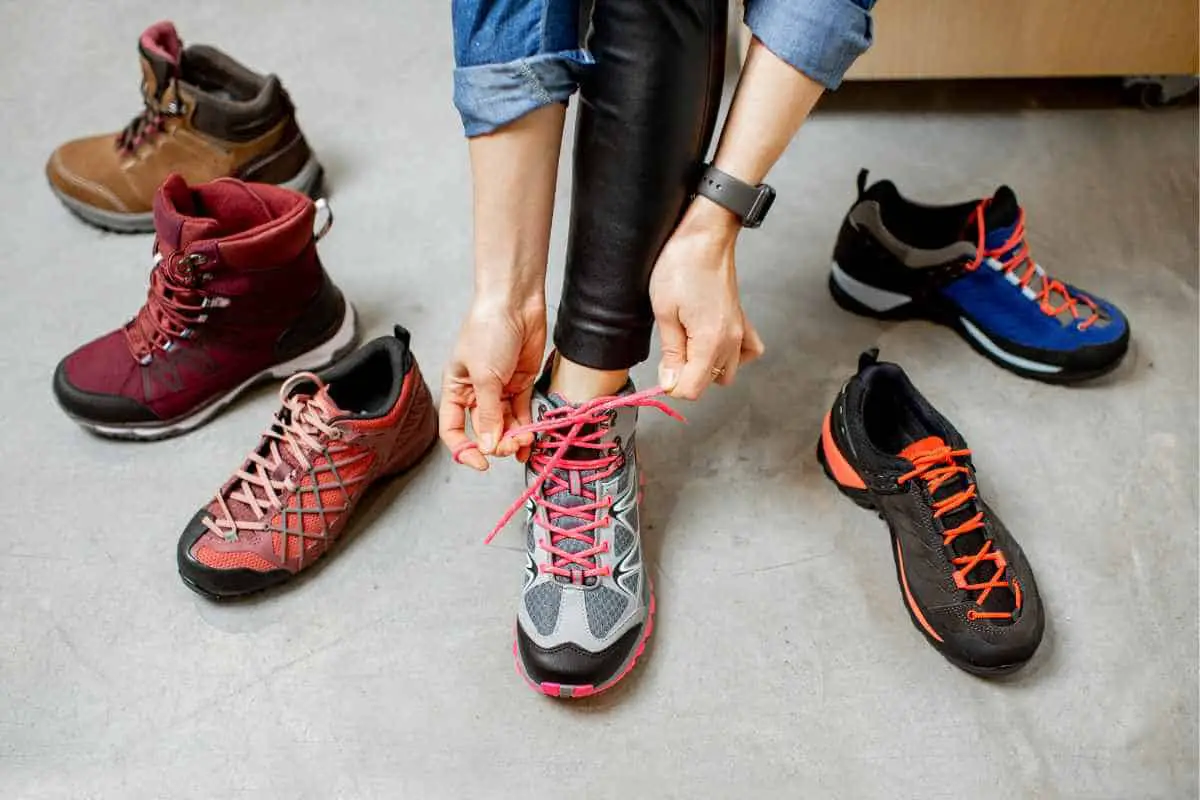When it comes to trail running shoes, finding the right fit is crucial for a comfortable and safe run. One of the most common questions that arise when buying trail running shoes is how big they should be.
While it may be tempting to go for a larger size for extra room, this can actually lead to discomfort and injuries.
The general rule of thumb is to have a thumb’s width of space between the tip of the toes and the front of the shoe. This allows for enough room for the toes to move and prevents them from hitting the front of the shoe on downhill runs.
However, it is important to note that this may vary depending on the individual’s foot shape and running style. It is recommended to try on several sizes and models to find the best fit for each individual.
Why Shoe Size Matters for Trail Running

Trail running is a popular outdoor activity that requires proper footwear to ensure comfort, support, and protection. One of the most important aspects of trail running shoes is their size.
Choosing the right size is crucial to prevent injuries, blisters, and discomfort during the run. In this section, we will discuss why shoe size matters for trail running.
The Importance of Fit
The fit of trail running shoes is essential to ensure comfort and support during the run.
A shoe that is too narrow or too small can cause blisters, while a shoe that is too big can cause the foot to slide inside the shoe, leading to discomfort and injuries.
It is recommended to measure both the length and width of the foot and use the size chart provided by the manufacturer to choose the right size.
The Role of Heel and Forefoot
The heel and forefoot play a crucial role in trail running shoes. The heel provides cushioning and support, while the forefoot provides traction and grip.
It is important to choose a shoe with a heel-to-toe drop that suits the runner’s needs. A high heel-to-toe drop is suitable for runners who prefer a heel strike, while a low drop is better for midfoot or forefoot strikers.
Also read – Are Running Shoes Good for Hiking?
The Impact of Terrain
The terrain is another factor to consider when choosing the right size for trail running shoes.
Shoes designed for light trails have a more flexible construction and a thinner sole, while shoes designed for rugged trails have a stiffer construction and a thicker sole. It is important to choose a shoe that provides enough protection and support for the specific terrain.
When choosing trail running shoes, it is important to consider the following:
- The design and construction of the shoe, including the outsole, midsole, and upper.
- The grip and traction of the shoe, especially on wet or slippery surfaces.
- The cushioning and foot protection provided by the shoe, including the presence of a rock plate or Eva foam.
- The heel-to-toe drop and the role of the heel and forefoot.
- The lacing system and the ability to adjust the fit.
- The size and fit of the shoe, including arch length and foot volume.
- The presence of any foot conditions, such as bunions, hammertoes, or plantar fasciitis, and the need for orthotics.
In conclusion, choosing the right size for trail running shoes is crucial for a comfortable and safe run. It is important to consider the design, construction, and fit of the shoe, as well as the terrain and the runner’s specific needs.
By taking these factors into account, runners can enjoy a comfortable and enjoyable trail running experience.
Read Next – Best Lightweight Trail Running Shoes for Men and Women
How to Find the Right Shoe Size for Trail Running

When it comes to trail running, having the right shoe size is crucial for both performance and comfort.
Poorly fitting shoes can lead to blisters, discomfort, and even injury. Here are some tips for finding the right shoe size for trail running.
Using a Length Size Chart
One of the simplest ways to find the right shoe size is to use a length size chart.
This chart will help you determine the length of your foot in inches or centimeters, which can then be used to find the right shoe size.
It’s important to note that different brands may have slightly different size charts, so be sure to check the specific chart for the brand you are interested in.
Read later 🏃 Hiking vs Running: Comparing Benefits and Challenges
Using a Width Size Chart
In addition to length, it’s also important to consider the width of your foot. Some people have wider feet than others, and wearing shoes that are too narrow can lead to discomfort and even injury.
Many brands offer width size charts, which can help you find the right shoe size for your foot width.
Trying on Shoes
While size charts can be helpful, it’s always a good idea to try on shoes before making a purchase. This will give you a better idea of how the shoe fits and feels on your foot.
When trying on shoes, be sure to wear the socks you plan to wear while running and walk around in the shoes for a few minutes to get a feel for them.
Lacing System
The lacing system of a shoe can also affect how it fits.
Some shoes have a traditional lacing system, while others have a quick-lace system or even a BOA system. Experiment with different lacing systems to find one that works best for your foot.
Finding the right shoe size for trail running is essential for both performance and comfort. By using size charts, trying on shoes, and experimenting with lacing systems, you can find the perfect fit for your foot.
Key Features of Trail Running Shoes

Trail running shoes are designed to provide comfort and support on rugged terrain, making them an essential piece of gear for any trail runner.
When choosing a pair of trail running shoes, there are several key features to consider.
Traction and Grip
One of the most important features of trail running shoes is their ability to provide traction and grip on a variety of surfaces.
Look for shoes with deep lugs on the outsole, which will help to provide better grip on loose or uneven terrain. The lug depth should be at least 5mm for more technical trails.
Cushioning and Support
Trail running shoes should provide adequate cushioning and support to protect the feet from impact and reduce the risk of injury.
Look for shoes with a midsole made of EVA foam, which will provide cushioning without adding extra weight. A shoe with a moderate heel-to-toe drop will provide enough cushioning for most runners.
Protection and Durability
Trail running shoes should be durable enough to withstand the rigors of trail running.
Look for shoes with a rugged construction, which will provide added protection against rocks and other obstacles on the trail. A rock plate is a specialized feature in trail running shoes that will protect the feet from sharp rocks or other debris on the trail.

Rock Plate
A rock plate is a thin layer of material, usually made of plastic or carbon fiber, that is placed between the midsole and outsole of a shoe. It provides additional protection against sharp rocks or other obstacles on the trail.
When choosing a pair of trail running shoes, it is important to consider the fit. The shoes should fit snugly around the midfoot and provide a locked-down feeling in the heel to eliminate any lifting or shifting over uneven terrain. In the forefoot, there should be enough space for the toes to move freely.
It is also important to consider the terrain and weather conditions where the shoes will be used. Shoes designed for light trail running may not provide enough support for more rugged trails.
Shoes designed for snowy or wet conditions should be waterproof and provide extra traction. Shoes designed for hot weather should be breathable to prevent the feet from overheating.
Overall, the right pair of trail running shoes can make a big difference in a runner’s performance and comfort on the trail. By considering the key features of trail running shoes, runners can find a pair that meets their needs and provides the support and protection they need to tackle any trail.
Conclusion
When it comes to trail running shoes, finding the right fit is crucial. The ideal shoe size will vary from person to person based on factors such as foot shape, running style, and the type of trails they run on.
However, there are some general guidelines that can help runners find the perfect fit.
- Firstly, it is important to consider the width of the shoe. Trail running shoes should have a wider forefoot area than road running shoes to allow for natural foot movement and avoid rubbing on fabric. Additionally, the heel should fit snugly without slipping, and there should be enough room in the toe box to wiggle the toes.
- Another factor to consider is the drop of the shoe. Most trail running shoes will have a moderate heel-to-toe drop, which encourages a midfoot or forefoot strike. However, runners who are used to wearing flats or flip-flops may prefer a lower drop.
- It is also worth noting that some runners may need to go up a half size or more to accommodate foot swelling during long runs. However, this is not a universal rule and should be based on individual experience.
In summary, finding the right fit for trail running shoes requires consideration of several factors, including width, heel fit, toe box room, and drop. By following these guidelines and trying on multiple pairs, runners can find the perfect shoe for their needs and enjoy a comfortable and safe trail running experience.





